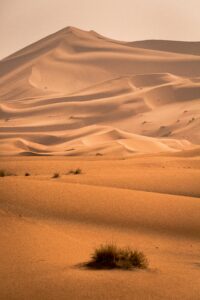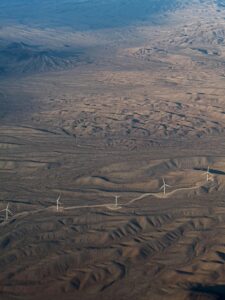Deserts are often portrayed as desolate and lifeless; however, they are among the most fascinating and diverse ecosystems on Earth. Covering about one-third of the land surface of our planet, deserts are defined by extreme climates, unique wildlife, and remarkable adaptability. In this article, the diverse world of deserts will be explored in order to dispel misconceptions and highlight ecological importance.
What Defines a Desert?
A desert has aridity in it; it receives less than 250 millimeters or 10 inches of rain every year. Some deserts are very warm, while others can be icy; some are just like the Sahara desert while others as icy as Antarctica because its feature defining is dryness not temperature.
Some people would consider it uninhabitable area of the world but, incredibly, deserts support many forms of life, geological features and cultural histories.
Kinds of Deserts
There are four broad categories of deserts based on their climate and geographical characteristics.
Hot and Dry Deserts: These are perhaps the most famous deserts known to mankind-the Sahara in Africa, the Arabian Desert, and the like. It can be really hot during the day with a temperature above 50°C or 122°F and drop by night because moisture is scarce in the air.
Cold Deserts: Antarctica and the Arctic are examples of cold deserts. They consist of freezing temperatures, ice-covered surface, and still play a major role in determining the climate conditions on Earth.
Coastal Deserts: These are those areas along the coastal regions, which is represented by the Atacama Desert located in South America. There are cool winters and warm summers, and proximity to the ocean influences their peculiar climate patterns.
Semi-Arid Deserts: These deserts, such as the one in the United States known as the Great Basin, receive a bit more rainfall than other types and can support diversity in shrubs and grasses.
Flora and Fauna
Deserts are alive with life, adapted to survive under extreme conditions.
Plants: Desert plants are adapted to save water. Iconic desert plants include cacti, having thick waxy surfaces and spines and other species such as creosote bush that survive by spreading their roots in extensive areas to absorb moisture.
Animals: Desert animals have found a way to cope with the high temperatures and scarcity of water. Camels are called “ships of the desert.” They carry fat in their humps, which enables them to travel for many days without eating or drinking. Some animals such as fennec foxes and scorpions are nocturnal because of the heat at dawn.
Deserts and Human Life
Throughout history, deserts have played an important role in human civilization. Many of the world’s earliest trade routes passed through deserts. Examples include the Silk Road. Most desert areas host indigenous communities and nomadic tribes and contain cities such as Dubai.
Economically, deserts are mined, where oil is extracted and even where solar energy is generated. For instance, the Atacama Desert contains much of the world’s source of lithium. This mineral is important in battery power in many new technologies.
Fascinating Facts about Deserts
Antarctica is the world’s largest desert that spans approximately 14 million square kilometers.
Hottest Recorded Surface Temperature: Lut Desert of Iran that recorded the hottest temperature ever which was the surface temperature reaching 80.8°C, or 177.4°F.
The world’s oldest desert is the Namib of Africa, over 55 million years old.
No-rain zones: Parts of the Atacama Desert have not seen a single drop in hundreds of years.

Challenges Deserts Face
Deserts are under threats from climate change and human activities. Overgrazing, mining, and urbanization lead to desertification, which is when fertile land becomes desert-like. This is an ecosystem that needs to be protected, as it hosts unique species and contributes to Earth’s climate balance.
Conclusion
Deserts are not mere long strips of sand but offer vibrant ecosystems rich in biodiversity and cultural importance. Right from resilient flora and fauna to human history and global ecology, the essentials of a desert highlight nature’s capability to respond optimally to man-made or planetary conditions. Their worth has to be realized and preserved to maintain ecological balance on the planet.



